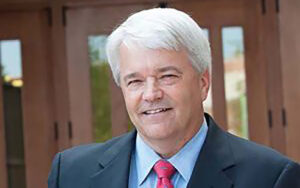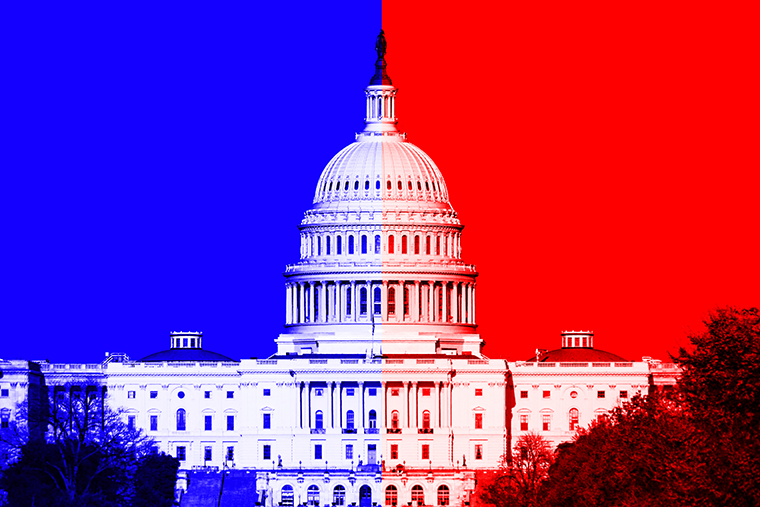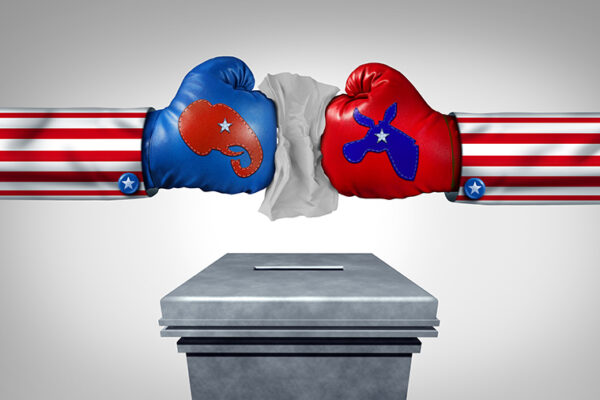The Democrats’ dual victories in Georgia’s runoff election on Jan. 5, created a rare 50-50 split in the U.S. Senate and will give majority power to the Democrats once Vice President-elect Kamala Harris — potentially, the deciding vote — is sworn into office on Jan. 20.
Given how divided politics in America has become, will the tied Senate be in constant gridlock?
Not necessarily.
History has shown that compromise — in the form of a power-sharing agreement — is possible, according to an expert on congressional politics at Washington University in St. Louis.

“While there are no formal rules about how the Senate should function in the event of an even split, there is a template,” said Steven Smith, the Kate M. Gregg Distinguished Professor of Social Science in Arts & Sciences.
The most recent Senate tie occurred in 2001, under President George W. Bush. With Vice President Dick Cheney casting the tie-breaking vote, Republicans maintained control of the Senate.
“Senate Majority Leader Trent Lott and Senate Minority Leader Tom Daschle were left to their own devices — and the consent of their party colleagues — to devise a power-sharing arrangement,” Smith said.
The historic Lott and Daschle 2001 plan will provide a map for discussions in the coming weeks, he said. Key points to that plan included:
- The majority party’s senior committee members chair all Senate committees;
- Equal party representation on all Senate committees; equal division of committee staffs between the parties;
- Procedures for discharging measures blocked by tie votes in committee;
- A 12-hour restriction on the offering of cloture motions on amendable matters;
- Restrictions on floor amendments offered by party leaders; eligibility of senators from both parties to preside over the Senate; and general provisions seeking to reiterate the equal interest of both parties in the scheduling of Senate chamber business; and
- The leaders agreed more informally to avoid filling the amendment tree, to allow minority senators to preside and give the parties equal access to meeting space.
Can compromise happen in today’s political environment?
“The Lott-Daschle agreement may be difficult to replicate,” Smith said. “Lott struggled to get his ‘majority’ party to agree to the terms he negotiated after the 2000 elections. With so many uncompromising members of his party conference, [current majority leader Republican Mitch] McConnell will find it even more difficult.
“Democrats, of course, will have the upper hand and could impose their own organizational plan if the Republicans prove unable to support a compromise plan. At the moment, I give them only a 60-40 chance of agreeing on a bipartisan power-sharing plan.”
One of the most significant hurdles standing in the way of a meaningful bipartisan agreement is minority obstructionism.
“Today’s Republicans, led by McConnell, have accepted the view that anything important — not just the rare issue — requires 60 votes for Senate action. That is not likely to change,” Smith said.
“The events of Jan. 6 may encourage efforts on both sides to reduce partisanship, which would improve the odds of a power-sharing agreement … At the moment, I give them only a 60-40 chance of agreeing on a bipartisan power-sharing plan.”
Steven Smith
Another hurdle to overcome is the cold relationship between Senate Democratic leader Chuck Schumer and McConnell, the Republican leader.
“Lott is quoted in The Washington Post as saying, ‘Tom Daschle and I used to talk more in a day than Mitch McConnell and Chuck Schumer do in a month of Sundays.’ This is due largely to McConnell, who is more of lone operator than Lott and most Senate leaders in recent decades. He has been that way since becoming Republican leader in 2007,” Smith said.
“Democrats do not trust McConnell. Schumer’s predecessor, Harry Reid, tried to get bipartisan agreements with McConnell to make the Senate work better. In both Congresses in which they started with agreements, Democrats recognized within months that McConnell could not, or did not want to, live up to the letter and spirit of those agreements. Schumer remembers.”
While compromise may have seemed out of the question just days ago, there is reason for hope now. “The events of Jan. 6 may encourage efforts on both sides to reduce partisanship, which would improve the odds of a power-sharing agreement,” Smith said.
Circumventing filibusters
“However, whatever preliminary procedural agreement that Schumer and McConnell work out in the next few weeks, the Democrats will use the reconciliation process, as Republicans have, to enact a substantial part of their program,” Smith said.
A reconciliation resolution authorizes action on budget resolutions. Both reconciliation and budget measures are considered under rules that allow for a majority vote without a minority filibuster.
“We can expect more than one reconciliation measure to be devised as the Democrats plan to cover pandemic relief, health care, tax policy and many other issues in the process. This includes the possibility of a carbon tax to address global warming.”
Reconciliation cannot be used for all important issues, though. “Unless Democrats change budget rules, as they might, the process cannot be used to increase the deficit after 10 years and must be limited to matters that affect spending and revenues,” he said.
“Nevertheless, economic relief checks, health insurance subsidies and many other high priorities for the Democrats can be incorporated. Massive planning by congressional Democrats and the Biden team are underway,” Smith added.



